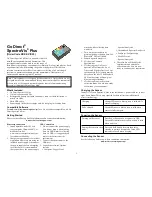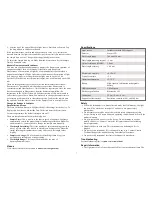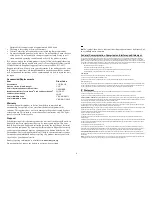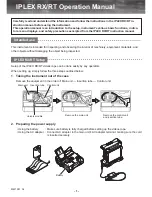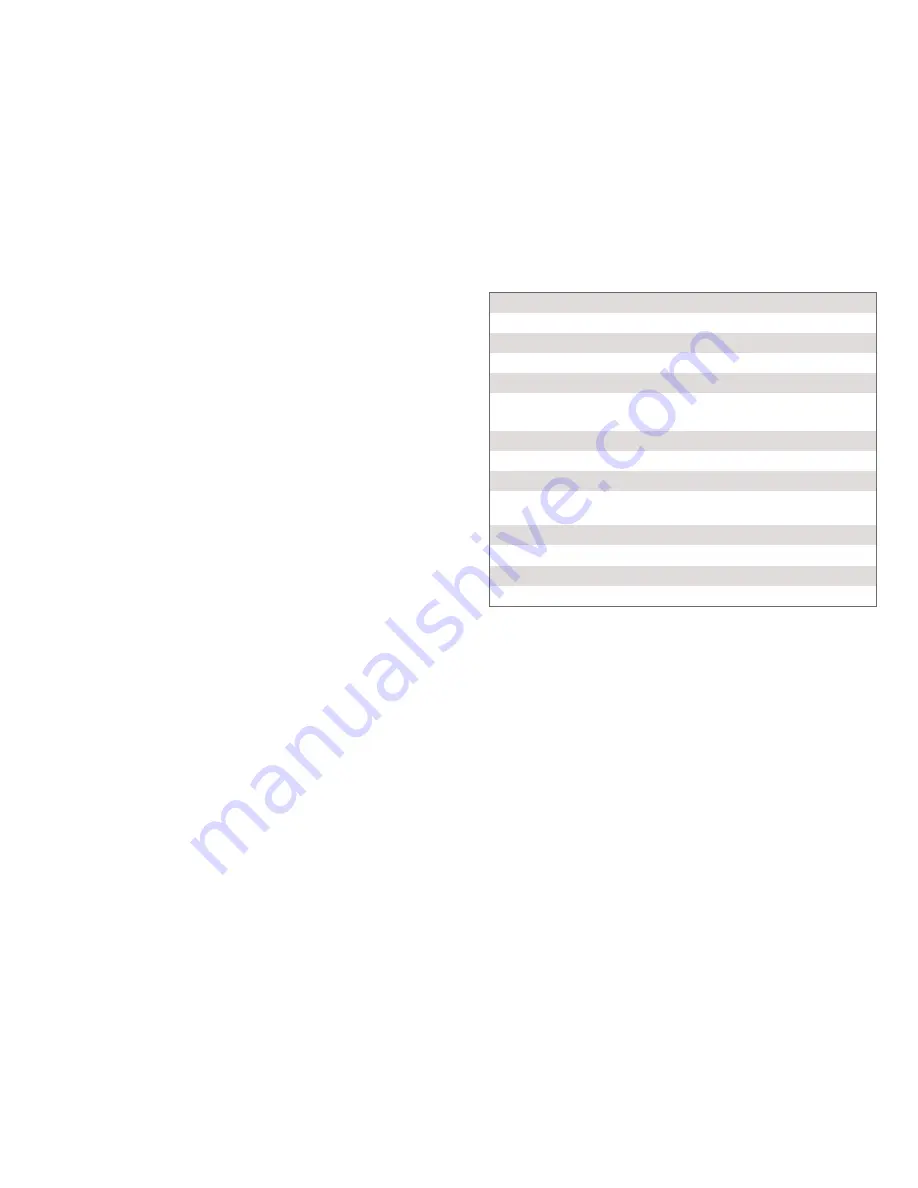
7
Specifications
Light source
Incandescent with LED support
Detector
Linear CCD
Wavelength range
380 nm–950 nm
Wavelength reporting interval ~1 nm
Optical resolution (FWHM)
5.0 nm
Wavelength accuracy
± 4.0 nm
Photometric accuracy
±0.10 A.U.
Typical scan time
~2 s
Operating temperature
15–35ºC
Battery
High-capacity, lithium-ion rechargeable
battery
USB specification
2.0 full speed
Wireless specification
Bluetooth
®
v4.2
Dimensions
15 cm × 9 cm × 4 cm
Support for fluorescence
Excitation centered at 405 and 500 nm
Safety
l
When this instrument is in data-collection mode labeled Intensity, the light
source will be blocked or turned off. Continue to use proper safety
precautions.
l
Do not remove or modify any of the installed safety components of this
device. Doing so will create an unsafe operating condition and will void the
product warranty.
l
No user-serviceable parts are in this device. Do not attempt to open or
modify this device. Contact Vernier for all repairs and service including
lamp replacement.
l
Handle the device with care. This instrument can be damaged if it is
dropped.
l
Do not use this instrument if it is damaged in any way. Contact Vernier
Technical Support for troubleshooting and technical assistance.
l
Do not use this instrument for clinical or diagnostic procedures.
Troubleshooting
For troubleshooting tips, see
www.vernier.com/til/3847
Repair Information
l
The light source in Go Direct SpectroVis Plus is an incandescent lamp. The
5. Aim the tip of the optical fiber at a light source. Start data collection. Tap
the Stop button to end data collection.
If the spectrum maxes out (flat and wide peaks at a value of 1), increase the
distance between the light source and the tip of the optical fiber cable or reduce
the sample time (see the Change the Settings in LabQuest section).
To adjust the sample time tap on Mode from the Meter screen. Set the Sample
Time to a suitable value.
Measure Fluorescence with LabQuest
You may use your Spectrophotometer to measure the fluorescence spectrum of
an aqueous sample, such as chlorophyll, riboflavin, and fluorescein.
Fluorescence is the emission of light by a compound after it has absorbed a
particular wavelength of light. Under most circumstances, the emission of light
will occur at a longer wavelength than the light used to excite it. The
SpectroVis Plus has two excitation wavelengths: one at 405 nm and one at 500
nm.
There are three general types of data collection that measure fluorescence—
fluorescence
vs.
wavelength, which produces a spectrum, fluorescence
vs.
concentration, and fluorescence
vs.
time for kinetics experiments. Once the units
have been changed to Fluorescence from the Sensors menu, follow the
instructions in the Collect Data with LabQuest section of this user manual to
collect these types of data.
Note:
You may need to change the sample time to
get accurate peak intensities in fluorescence mode. To adjust the sample time
tap on Mode from the Meter screen. Set the Sample Time to a suitable value.
Change the Settings in LabQuest
Data Collection Screen
The Data Collection Screen in LabQuest lists all the settings for the device. To
display this box, choose Sensors ► Data Collection from the Meter screen.
For most experiments, the default settings work well.
There are four parameters listed in the dialog box.
l
Sample Time:
This is similar to the shutter speed of a camera. LabQuest
automatically selects the proper sample time during calibration.
Note:
For
emission studies, you may need to change the sample time manually.
l
Wavelength Smoothing:
This is the number of adjacent readings on either
side of a given value that is used to calculate an average value.
Note:
Be
careful adjusting this parameter as it may shift your wavelength values
slightly.
l
Samples to Average:
This is the number of readings taken at a given
wavelength to calculate an average reading.
l
Wavelength Range:
The range is determined by the type of
Spectrophotometer in use.
Videos
View videos related to this product at
www.vernier.com/gdx-svispl

